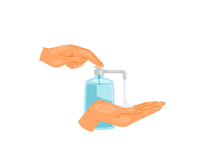Chlorocresol
Uses of Chlorocresol
- Used as a preservative in topical creams and ointments
- Prevents microbial contamination
- Maintains product stability and shelf life
- Provides protection against bacteria and fungi
- Commonly found in cosmetic and pharmaceutical products
How Chlorocresol works
Chlorocresol works by disrupting the cell membranes of bacteria and fungi, leading to their death. This action helps prevent contamination and spoilage of the product in which it is used.
Benefits of Chlorocresol
- Effectively preserves pharmaceutical products
- Extends shelf life of formulations
- Protects against a wide range of microbes
- Enhances product safety and hygiene
- Stable and easy to incorporate into formulations
How to take Chlorocresol
Chlorocresol is not taken orally; it is an ingredient used in topical medications and products. Use products containing Chlorocresol as directed by your healthcare provider or as per product labeling. Avoid applying on large broken skin areas unless prescribed.
Type of Dosage Available
- Topical cream
- Ointment
- Lotion
Side effects of Chlorocresol
- Skin irritation
- Redness or itching
- Allergic reactions (rare)
- Contact dermatitis in sensitive individuals
Safety advice
- For external use only
- Avoid contact with eyes and mucous membranes
- Perform a patch test before first use if you have sensitive skin
- Discontinue use if irritation or allergic reaction occurs
- Keep out of reach of children
Frequently Asked Questions (FAQs)
Q. What is Chlorocresol used for?
A. Chlorocresol is used as a preservative in creams, ointments, and other pharmaceutical products to prevent microbial contamination.
Q. Is Chlorocresol safe for skin?
A. Yes, it is generally safe in low concentrations, but it may cause irritation or allergic reactions in sensitive individuals.
Q. Can I use Chlorocresol-containing products on open wounds?
A. Use on open wounds should be avoided unless specifically prescribed by a doctor.
Q. Does Chlorocresol have antibacterial properties?
A. Yes, Chlorocresol has both antibacterial and antifungal properties that help preserve topical products.
Q. Is Chlorocresol the same as an antibiotic?
A. No, Chlorocresol is a preservative and not used to treat infections directly like antibiotics.
Medicine Not Available for Chlorocresol
Uses of Chlorocresol
- Used as a preservative in topical creams and ointments
- Prevents microbial contamination
- Maintains product stability and shelf life
- Provides protection against bacteria and fungi
- Commonly found in cosmetic and pharmaceutical products
How Chlorocresol works
Chlorocresol works by disrupting the cell membranes of bacteria and fungi, leading to their death. This action helps prevent contamination and spoilage of the product in which it is used.
Benefits of Chlorocresol
- Effectively preserves pharmaceutical products
- Extends shelf life of formulations
- Protects against a wide range of microbes
- Enhances product safety and hygiene
- Stable and easy to incorporate into formulations
How to take Chlorocresol
Chlorocresol is not taken orally; it is an ingredient used in topical medications and products. Use products containing Chlorocresol as directed by your healthcare provider or as per product labeling. Avoid applying on large broken skin areas unless prescribed.
Type of Dosage Available
- Topical cream
- Ointment
- Lotion
Side effects of Chlorocresol
- Skin irritation
- Redness or itching
- Allergic reactions (rare)
- Contact dermatitis in sensitive individuals
Safety advice
- For external use only
- Avoid contact with eyes and mucous membranes
- Perform a patch test before first use if you have sensitive skin
- Discontinue use if irritation or allergic reaction occurs
- Keep out of reach of children
Frequently Asked Questions (FAQs)
Q. What is Chlorocresol used for?
A. Chlorocresol is used as a preservative in creams, ointments, and other pharmaceutical products to prevent microbial contamination.
Q. Is Chlorocresol safe for skin?
A. Yes, it is generally safe in low concentrations, but it may cause irritation or allergic reactions in sensitive individuals.
Q. Can I use Chlorocresol-containing products on open wounds?
A. Use on open wounds should be avoided unless specifically prescribed by a doctor.
Q. Does Chlorocresol have antibacterial properties?
A. Yes, Chlorocresol has both antibacterial and antifungal properties that help preserve topical products.
Q. Is Chlorocresol the same as an antibiotic?
A. No, Chlorocresol is a preservative and not used to treat infections directly like antibiotics.
Download India's most affordable pharmacy app
- Compare with medicine prices
- Save upto 90% on your medicine bills

Temperature Controlled storage and delivery

Regular Sanitization

Disinfected Packaging









 Added!
Added!